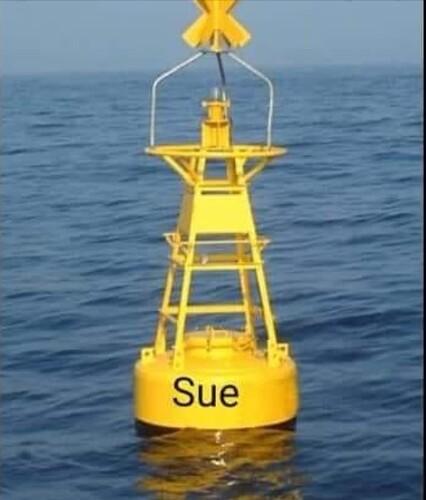-
Posts
2,265 -
Joined
-
Last visited
Content Type
Profiles
Forums
Events
Gallery
Posts posted by Kit Basher
-
-
Thanks, guys. It sounds like my best bet is to put the tires on the wheels before doing the decals. The tires are kinda hollow and very flexible, very similar to the tires and decals on Jim's Corvette. I will have to mask the wheels, as I want to keep them a bit shiny.
Any additional advice would still be welcome.
-
I'm building the Revell "2017 Ford GT Le Mans". It's time to put the decals on the tires. I haven't done this before, so I have a couple of questions.
Any special prep needed to make the decals stick to the tires?
I'm guessing I will need to do something to take the shine off the decals. I have Testors Dullcote, but is there a better product or technique for doing this?
Can I put the tires on the wheels after decals and clear, without destroying the decals?
Any advice would be most welcome. Thanks
-
-
Would that be Model Car Mountain, Carl?
-
The smoke has reached all the way to here in Virginia. I can't smell it, but the sun and moon come up pink, and everything is hazy gray.
-
10 hours ago, Richard Bartrop said:
Yes, liquid cement is not kind to paint, and neither is CA glue. My goto adhesive for small stuff where I don't want to damage paint or plastic is five minute epoxy
I totally agree. I wouldn't even consider using solvent cement to glue a chrome door handle to a painted body. Epoxy for sure.
-
On 5/13/2023 at 6:25 PM, Richard Bartrop said:
Honestly, I don't really see the point of thinning tube glue instead of just using the liquid stuff straight. Touch the brush to a seam, and let capillary action do the rest. If you have gaps to fill, add some bits of scrap styrene.
I do most of my building using liquid cement straight the way you described. Where I'm finding the thinned tube glue useful is for small parts or painted/chrome parts. I can scrape the glue surface, place the thinned glue, and assemble the parts. When I try to do that with straight liquid cement, I inevitably get cement where I don't want it, damaging the paint or chrome.
I'm not suggesting that thinned tube glue is the only glue you will ever need. I use several different glues, depending on the application. For me, this is another tool in the toolbox that helps me with certain jobs.
-
 1
1
-
-
2 hours ago, sfhess said:
Oops. It's a Monaco. It was late and I'm not feeling well.
No problem. I just got all excited about a Polara.
-
4 hours ago, sfhess said:
MPC 65 Dodge Polara
Wait, what? Details please! I did not know such a kit exists. I have been looking for a '65 Polara for years. I thought the closest thing was the '65 Monaco.
-
20 hours ago, SfanGoch said:
Thinning tube glue with a liquid cement is a ponderous method to create something which already exists. Plastruct Plastic Weld and Bondene, for example. accomplish the same thing. So do Testors 3502XT and Tamiya 87012 with no strings attached, (pun intended). All of these liquid cements allow time to properly position parts.
For me, the advantage of the mixture is that it is thicker than liquid cement like Plastic Weld or Bondene, and can be placed precisely, in exact amounts. That makes it good for small parts. I do use liquid cement for things like engine block halves where I can just let it wick into the joint. I am not familiar with the Testors and Tamiya products you mention.
5 hours ago, Lunajammer said:That was probably me. I’ve advocated for that several times. Yes I still have my other glues but I like to have one where I can manage a viscosity that falls in between the others. It’s part of my tool arsenal.
Well then, thank you Mike! I don't intend to use it for everything, but for certain jobs, it's been working great for me.
-
 2
2
-
-
Awhile ago, someone on this forum mentioned that they use tube glue thinned with liquid cement. I wish I could remember who that was, so I could thank him. I decided to give it a try, and it has been a game changer for me. It is easy to control (no strings!), and once applied with a toothpick or small brush, stays where you put it. It stays wet long enough to position a part, then grabs hard and fast. Since it is a plastic to plastic "welded" bond, you know it isn't coming apart. I mix up small batches in a Testors paint bottle, and it keeps for weeks. I can always thin it more if I need to.
So, to whoever suggested this, THANK YOU!
-
 2
2
-
-
3 hours ago, gman said:
In the sympathy category, I had the same happen with ink jet decal paper in my Epson printer- the ink beaded up on the paper and distorted the printed image. I tried a few things including rubbing the decal paper area to be printed with an eraser, which only marginally made a difference. Different printer modes did not make much difference. Some printers and their inks just work better for decal paper than others. I've still got the Epson printer, and haven't tried again- I may have another go when the printer gets replaced.
I've had the same experience as Greg. I could not get good images with the Epson printer, even with inkjet decal paper. The Epson would print the image perfectly on photo paper, but I tried a couple different brands of decal paper and no luck. An old HP printer worked fine, on the same paper. I think there must be something about the way an Epson prints that doesn't like decal paper. I hope you have better luck.
-
10 hours ago, gbdolfans said:
Great job on one of my favorite planes !!!
Thanks, George!
-
That is awesome!
-
 1
1
-
-
9 hours ago, BlackSheep214 said:
Tamiya Tomcat kits are the best fitting of all the other brands. Reviews have been raving about this one for some time now. Expensive but worth every penny of it.
Thanks, Thomas! I agree, worth every penny. It was cheap, when you consider how many hours of pleasure I got out of it.
-
17 minutes ago, TransAmMike said:
Good job Hugh, sadly F14's are retired but live on in displays and models.
Thanks, Mike! Still one of the baddest looking planes ever, IMO.
-
4 minutes ago, cobraman said:
Very nice work.
Thanks, Ray!
-
-
Tamiya 1/48. I build as much for the experience as for the finished product. This one was pure pleasure. In typical Tamiya fashion, everything went together beautifully. Lots of parts, some tiny, but they all fit perfectly. I'm not a real aircraft modeller, so this is not at the level of the folks who are, but I'm really glad to have it on my shelf.
-
 3
3
-
-
On 4/1/2023 at 9:41 AM, NOBLNG said:
I definitely wouldn’t soak it in lacquer thinner because it will attack the styrene underneath if it can get through anyplace.😬 Maybe careful rubbing with a Q-tip or Tamiya swab soaked in the thinner. I would try the hot water or alcohol methods first. You could maybe try some commercial paint remover also, but you would have to first do a test to ensure that it doesn’t attack the chrome or styrene.
Yep, I wouldn't soak it either. I brushed on the lacquer thinner, then immediately wiped off the paint. Worked great. As I said, no guarantee it would ever work again.
-
I had good success removing water based craft paint from some wheels with lacquer thinner. It didn't hurt the chrome at all. No guarantee it would work in your situation, or ever again, for that matter, but I got lucky once.
-
I don't know it this applies to Model Color, but I use a different water based paint (AutoAir), and they recommend dry sanding it. I wet sanded it the first time I used it, with the same results you got. Dry sanding works much better.
-
 1
1
-
-
Thanks, Ron!
Thanks, Jeremy!
Thanks, Ismael!
-
18 hours ago, bogger44 said:
Well done Hugh! That is a great shade of blue. I wouldn't mind getting my hands on one of these someday.
Thanks, Tony! This kit was re-released by AMT in 2022. Shouldn't be too hard to find.
Thanks, Larry!




Tire decals?
in Model Building Questions and Answers
Posted
Yeah, I am concerned about silvering. The tires are more of a flat color, not shiny like old AMT tires. The closest thing I have to Tamiya acrylic clear is Future, I may try some on the inside of a tire and see if it sticks. I can always get Tamiya clear if that would work better.
I'm wondering if anyone has used something besides Dullcote. I have a bottle of Tamiya flat clear. Would that make any difference?